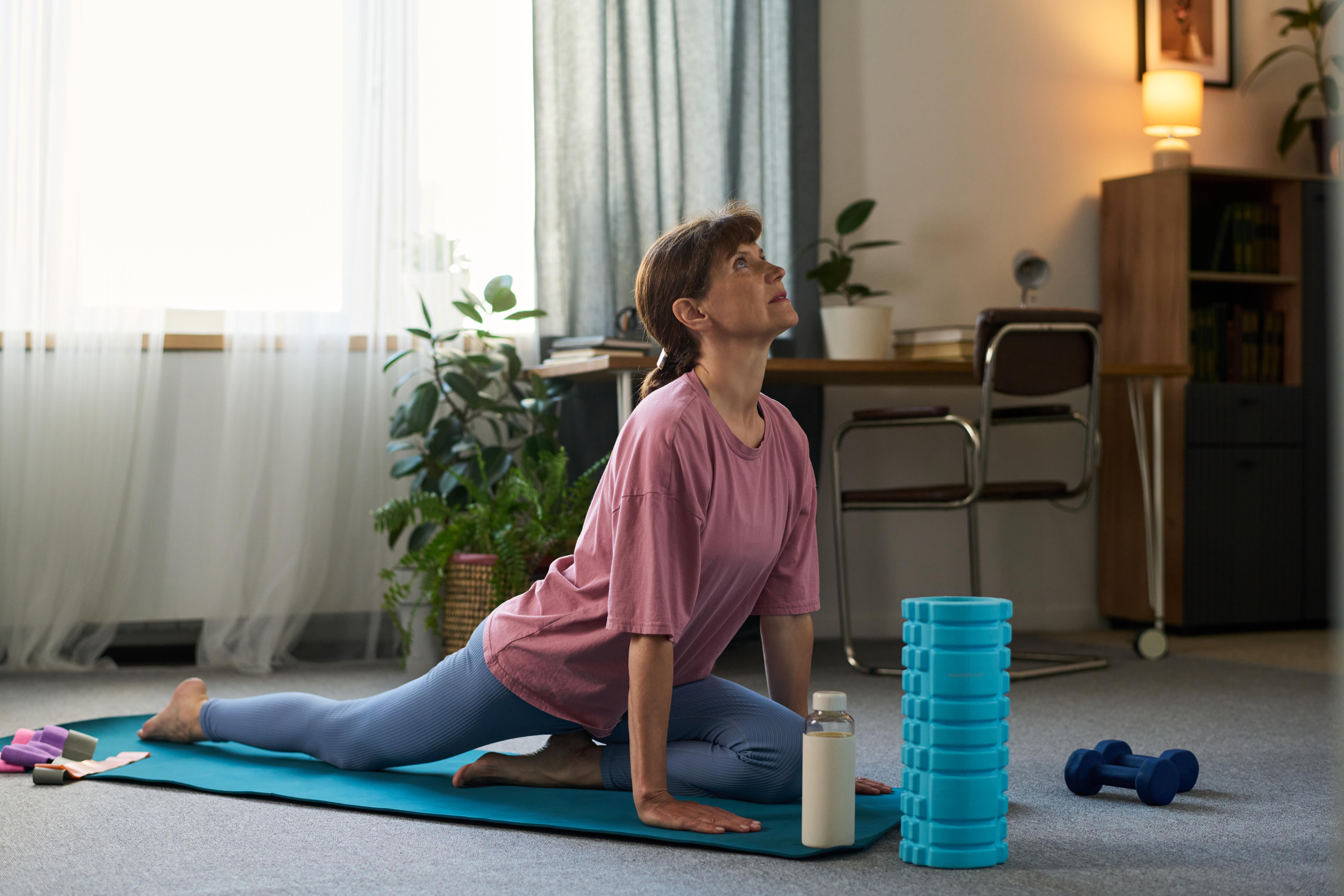Gentle Sciatica Exercises for Beginners to Start Today
53. The Psoas Release with a Supported Lunge

The psoas muscle is a deep hip flexor that, when tight, can pull your pelvis forward and increase compression on your lower spine, directly impacting the sciatic nerve. To release this tension, get into a kneeling lunge position with your front knee at a 90-degree angle and your back knee on the floor. For support, place a firm pillow or yoga block under your back knee. Gently shift your weight forward, feeling a stretch in the front of your back hip. To avoid arching your back, engage your core gently. Hold for 30–60 seconds, breathing deeply into the stretch, then switch sides. This passive release can significantly reduce anterior pelvic tilt and alleviate pressure on the lower spine.
54. Wall-Assisted Calf and Plantar Fascia Release

Tight calves and feet can affect your entire kinetic chain, pulling on your hamstrings and creating tension that travels up to your lower back. This simple exercise, done against a wall, helps address this often-overlooked area. . Stand facing a wall, placing the ball of one foot against it while the heel remains on the floor. Lean forward gently until you feel a stretch in your calf and up into your arch. You can also place a tennis ball or lacrosse ball under your foot and roll it to release tension in the plantar fascia. This dual-action approach relieves tension from the ground up, promoting better posture and taking stress off your sciatic nerve.
